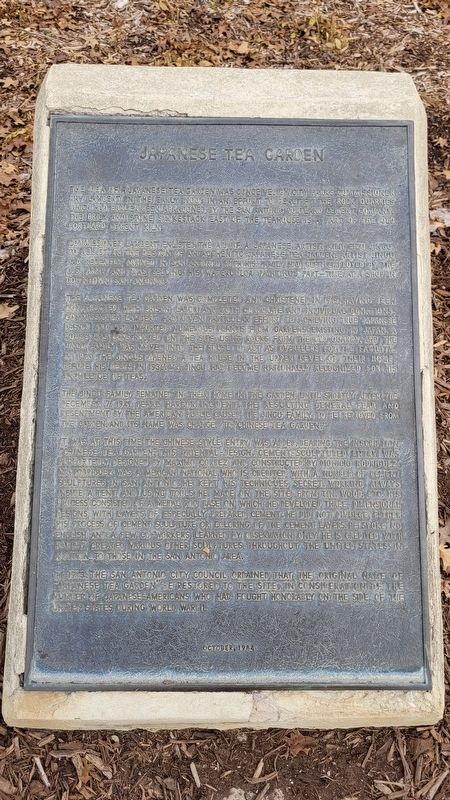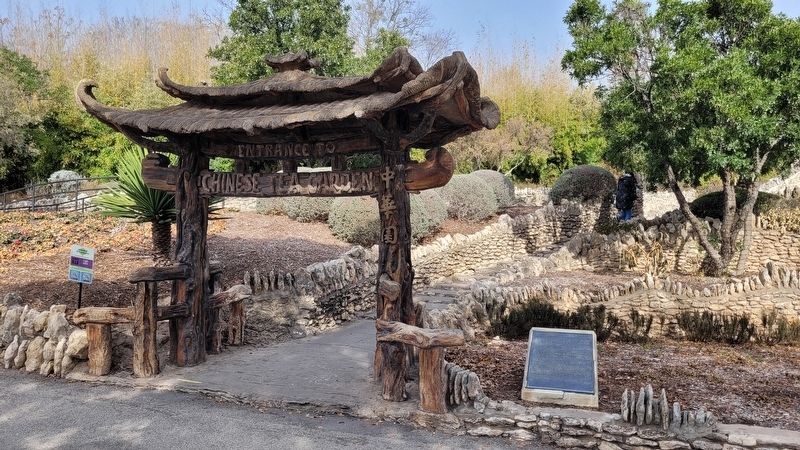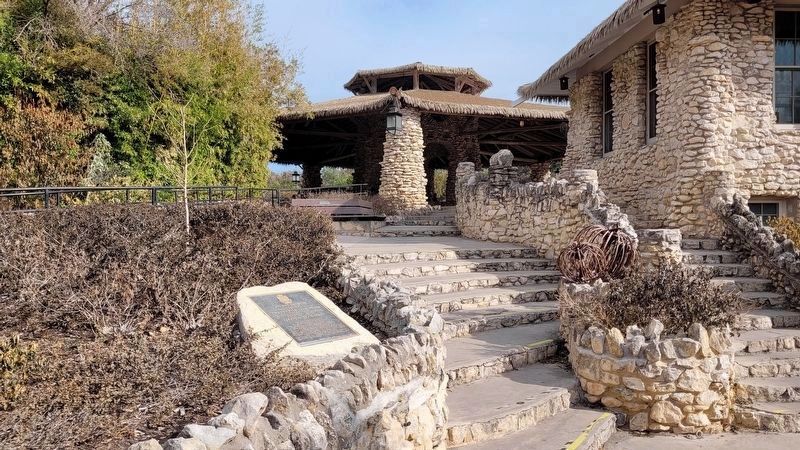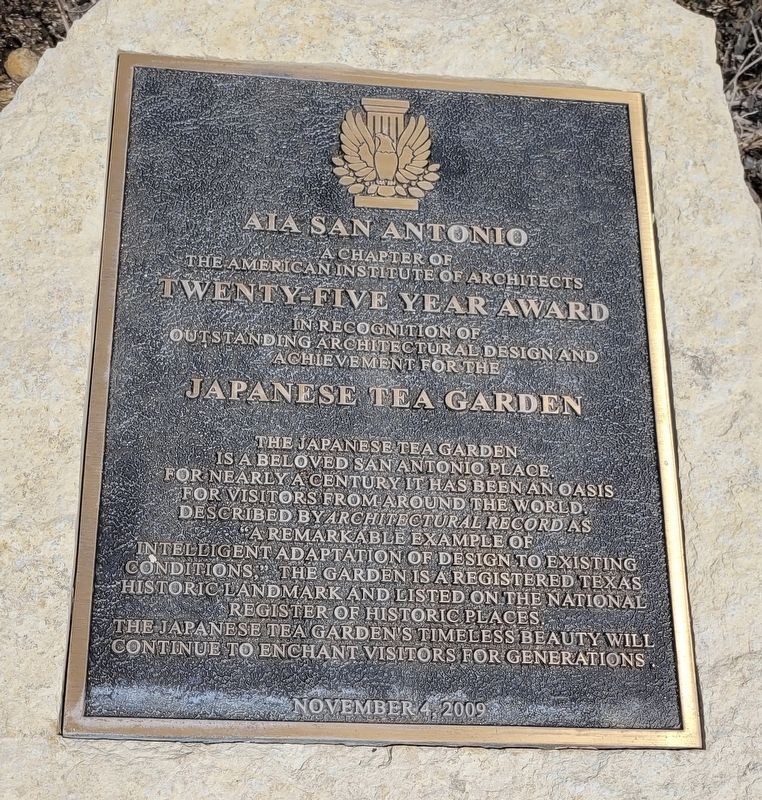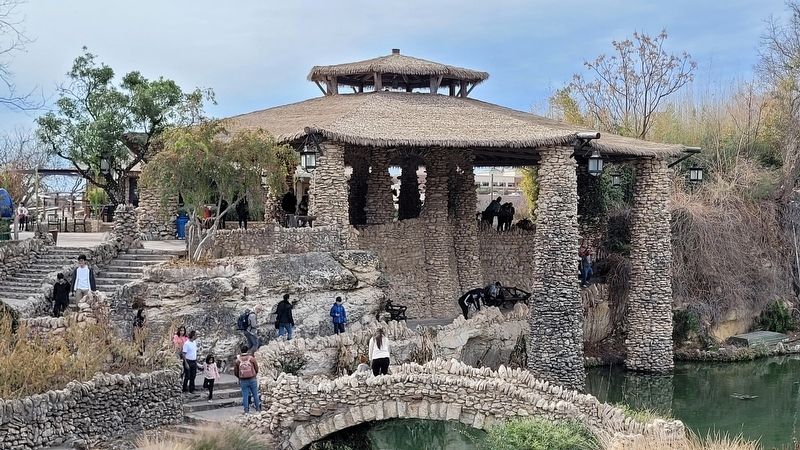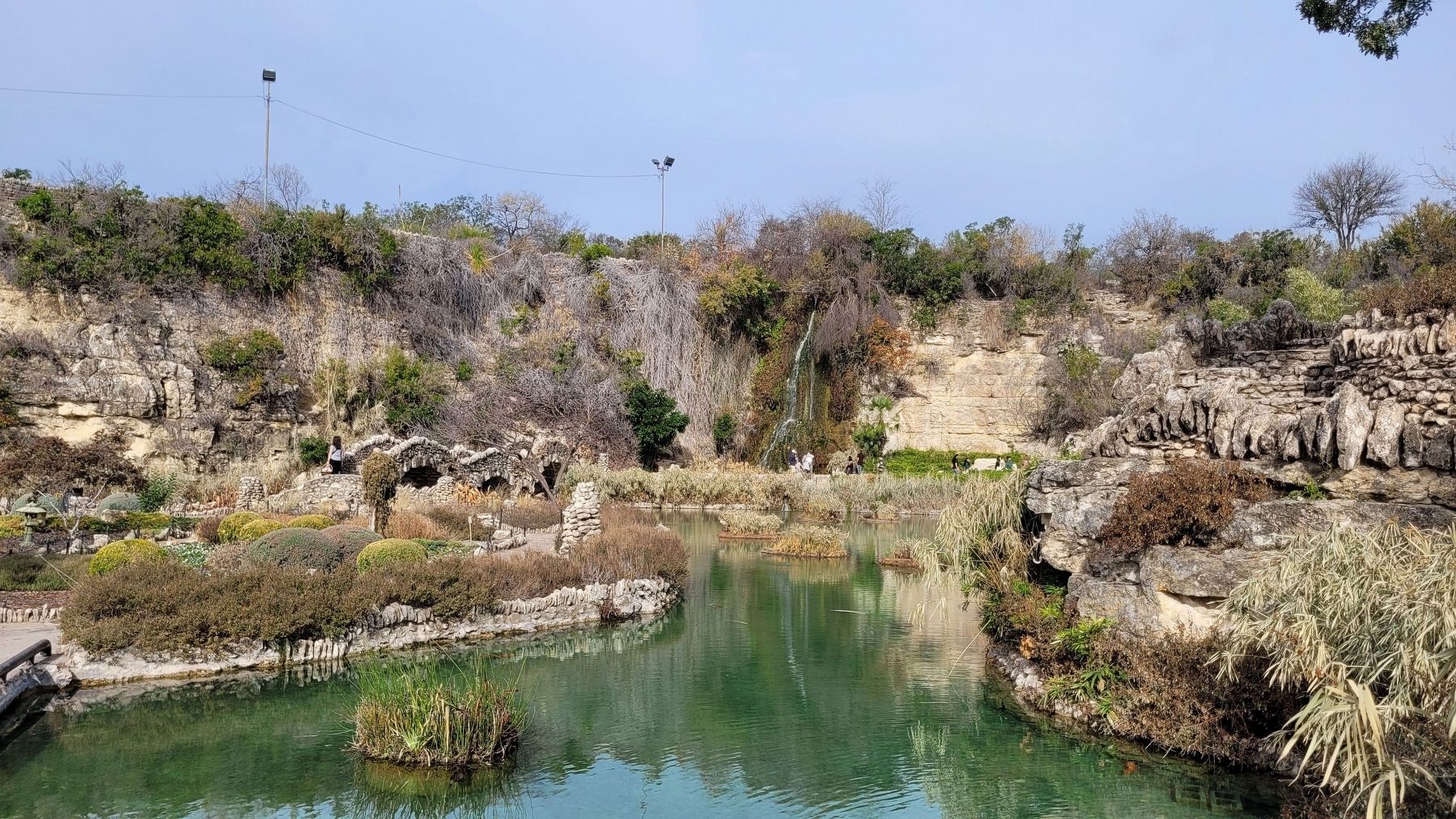Midtown in San Antonio in Bexar County, Texas — The American South (West South Central)
Japanese Tea Garden
Commissioner Lambert enlisted the aid of a Japanese artist Kimi Eizo Jingu to assist in the design of an authentic Japanese Tea Garden. Artist Jingu had recently arrived in San Antonio with his family, had been employed by the U.S. Army, and was selling his watercolor paintings part-time at a shop in downtown San Antonio.
The Japanese Tea Garden was completed and christened in 1919, having been constructed with prison labor and both corporate and individual donations. Commissioner Lambert had given particular effort to achieving true Japanese design and had imported numerous plants from gardens existing in Japan. A house was constructed on the site, using rocks from the old quarry, and the Jingu family was moved into the house to act as overseers for the facility. In 1926 the Jingus opened a tea house in the upper level of their home. Before his death in 1936, Mr. Jingu had become nationally recognized for his knowledge of teas.
The Jingu family remained in their home in the garden until shortly after the December 7, 1941 Pearl Harbor Incident. The resulting general fear and resentment by the American Public caused the Jingu family to be removed from the garden, and its name was changed to "Chinese Tea Garden."
It was at this time the Chinese-Style entry was added, bearing the inscription Chinese Tea Garden." This oriental-design, cement-sculptured entry was purportedly designed by Maximo Cortez and constructed by Dionicio Rodriguez.
Mr. Rodriguez was a Mexican national who is credited with a number of cement sculptures in San Antonio. He kept his techniques secret, working always inside a tent and using tools he made on the site from tin, wood, etc. His process consisted of a metal rod base on which he developed three-dimensional designs with layers of especially prepared cement. He did not divulge either his process of cement sculpture or coloring of the cement layers. He spoke no English and a few co-workers learned by observation only. He is credited with having created various other sculptures throughout the United States, in addition to those in the San Antonio area.
In 1983, the San Antonio City Council ordained that the original name of "Japanese Tea Garden" be restored to the site, in consideration of the number of Japanese-Americans who had fought honorably on the side of the United States during World War II.
Erected
1984 by City of San Antonio.
Topics. This historical marker is listed in these topic lists: Architecture • Horticulture & Forestry • Peace • War, World II. A significant historical date for this entry is December 7, 1941.
Location. 29° 27.644′ N, 98° 28.629′ W. Marker is in San Antonio, Texas, in Bexar County. It is in Midtown. Marker is at the intersection of North Saint Mary's Street and Alpine, on the left when traveling east on North Saint Mary's Street. The marker is located at the front entrance to the Japanese Tea Garden in the Brackenridge Park. Touch for map. Marker is at or near this postal address: 3853 North Saint Mary's Street, San Antonio TX 78212, United States of America. Touch for directions.
Other nearby markers. At least 8 other markers are within walking distance of this marker. The Mexican Village (within shouting distance of this marker); Alamo Portland and Roman Cement Company (within shouting distance of this marker); a different marker also named Japanese Tea Garden (within shouting distance of this marker); Upper Labor Acequia (about 300 feet away, measured in a direct line); Flag Pole Memorial (approx. 0.2 miles away); San Antonio Zoo (approx. ¼ mile away); Wildlife Trail (approx. 0.3 miles away); Polo Field (approx. 0.3 miles away). Touch for a list and map of all markers in San Antonio.
More about this marker. There are 2 markers with the same name but
different text on the grounds of the Japanese Tea Garden.
Also see . . . Japanese Tea Garden. City of San Antonio
Lambert ultimately came up with the idea of a lily pond which eventually became the Japanese Tea Garden. With plans from his park engineer and no money, Lambert was able to construct the Garden. Between July 1917 and May 1918, Lambert used prison labor to shape the quarry into a complex that included walkways, stone arch bridges, an island and a Japanese pagoda. The garden was termed the lily pond, and local residents donated bulbs to beautify the area. Exotic plants were provided by the City nursery and the City Public Service Company donated the lighting system. The pagoda was roofed with palm leaves from trees in City parks. When completed, Lambert had spent only $7,000. In 1919, The American City magazine reported that "the city of San Antonio has recently completed a municipal lily pond and a Japanese garden which we believe are unique."(Submitted on January 27, 2023, by James Hulse of Medina, Texas.)
Credits. This page was last revised on February 2, 2023. It was originally submitted on January 26, 2023, by James Hulse of Medina, Texas. This page has been viewed 102 times since then and 18 times this year. Photos: 1, 2, 3, 4, 5, 6. submitted on January 27, 2023, by James Hulse of Medina, Texas.
